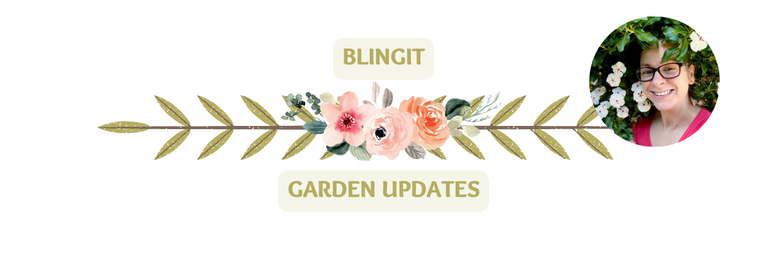
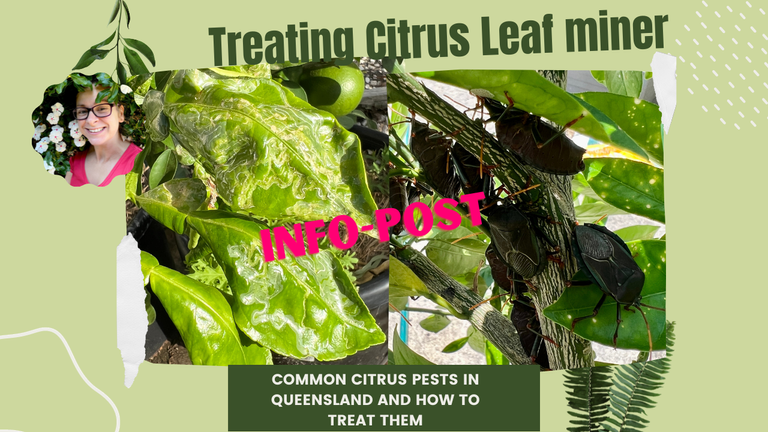
COMMON PESTS IN CITRUS - QUEENSLAND AUSTRALIA
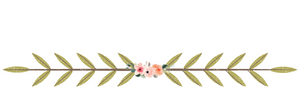
Hi Folks, again, apologies for the delay, i wrote most of this post 2 weeks ago, but just simply lacked the time to edit it as well as i wanted. I really wanted to get the format correct and edit it nicely. Getting the subheadings and what not correct rather than waffle on... lol
Today we are talking about pests in citrus trees in south east Queensland. You may remember we have had some damage from citrus leaf minor in the past. However the situation as ramped up this year. Today i will be showing you the damage caused by the pests in the garden, what they might be and offering the advice given to me for fixing them.
Today, we're zeroing in on the culprits behind the damage. We'll take a closer look at some of the most common adversaries of our citrus trees, including the notorious citrus gall wasp, the sap-sucking bronze orange bug, and the fruit-disfiguring Queensland fruit fly and the slimy citrus leaf miner - oh how i hate thee. Not only will we identify these pests, but we'll also explore practical and effective strategies to mitigate and manage them.
If only they would work ..lol... actually there is some success i think. Certainly better than last year
Before we start here is the garden for those that don't know it
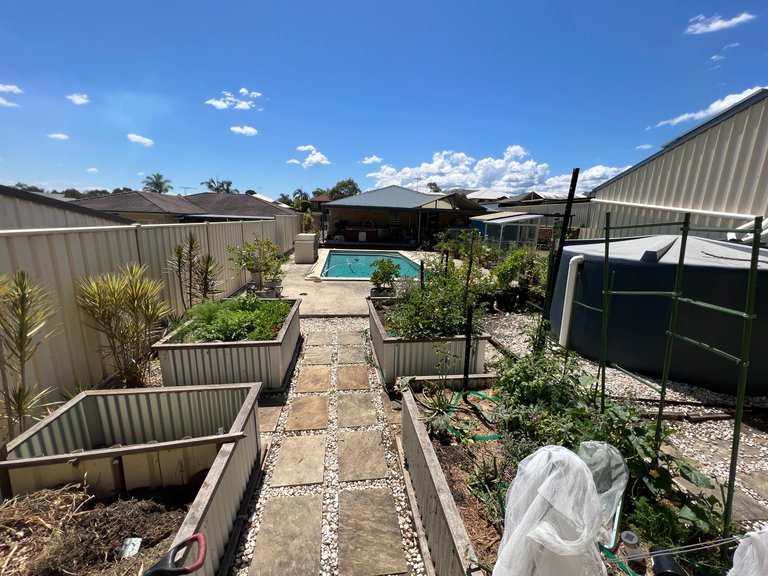
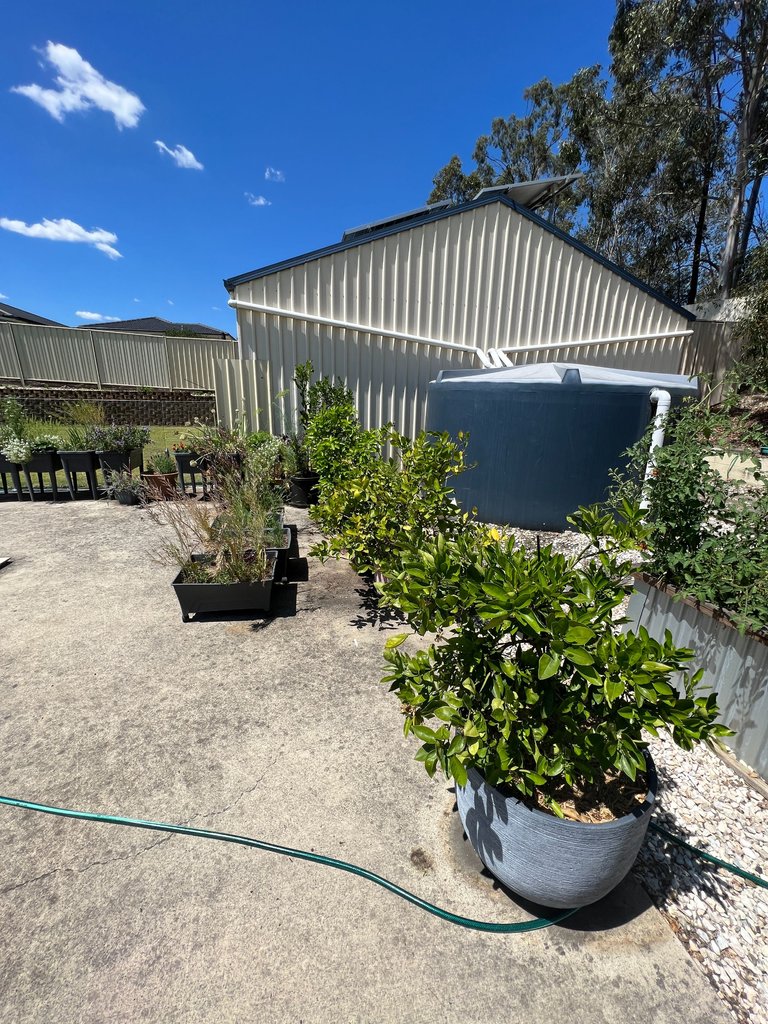
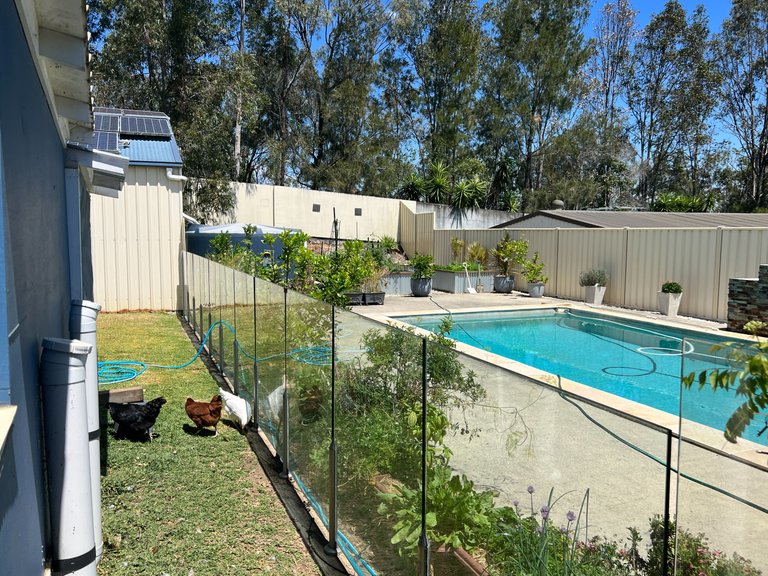

Citrus Leafminer (Phyllocnistis citrella):

Ok so let us start with this nasty litte pest that has caused so much destruction in my "ornamental" citrus trees. While they are there for production, they are around the pool and designed to be a bit attractive. So its gotta go....
Description: A tiny moth whose larvae tunnel just below the leaf surface, creating a distinctive silvery trail on the new leaves.
What they do: The larvae create winding trails on young leaves which can cause them to curl and distort. This reduces the tree's photosynthetic capacity.
Damage Level: Mostly cosmetic. Heavily infested trees might experience reduced vigour but won't die from the infestation. It looks hideous.
Control Level Needed: Control is desirable for aesthetics and to maintain tree health, especially in younger trees.
Control Methods:
Cultural Control: Regularly prune and remove affected leaves, and avoid excessive use of nitrogen-rich fertilizers which promote lush new growth that leafminers prefer. ( but i like fertilizer)
Natural Predators: Parasitic wasps can help control leafminer populations. Avoid using broad-spectrum insecticides that may kill these beneficial insects.
Chemical Control: There are specific leafminer sprays available. It's essential to spray at the right time, targeting the young larvae before they start mining.
Basically you need to spray the NEW GROWTH in the tree in early spring when the leaves are new soft and tender and small. I use a organic horticultural oil. It needs to COAT both sides of the leaves AND be applied every 5-7 days. I garden Tuesday so Tuesday is the day.
Its better this year, but i missed an important week early in the season and the pests got in. I also tried a pheramone trap. No idea how good that is working. However i so far have less damage now i know what to look for.
I also chopped off the affected leaves (the bad ones) in case there were still more bugs in there to spread. Dont put in the compost. Burn the leaves or throw out.
below is the nice new green leaves that the miner LOVES to eat. protect these
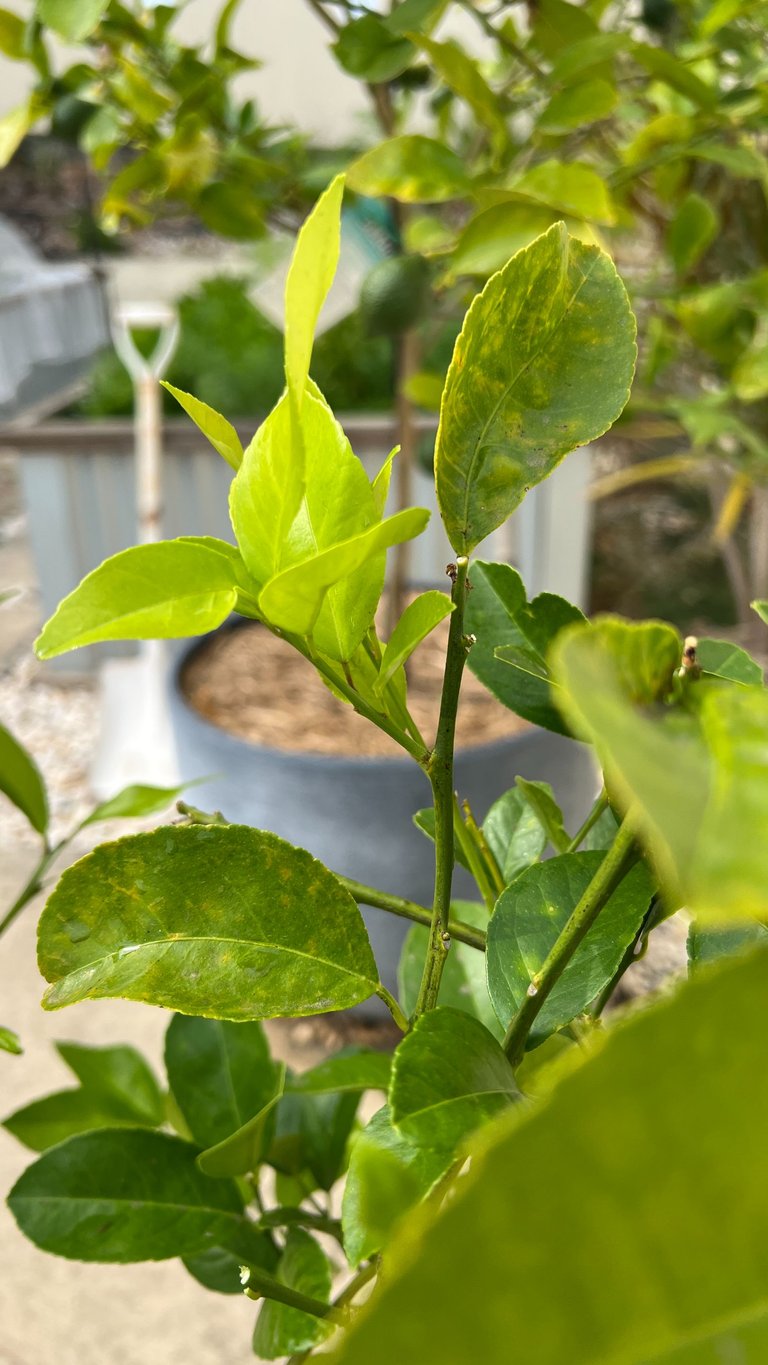
below is me chopping out gall wasp and leaf miner in the trees
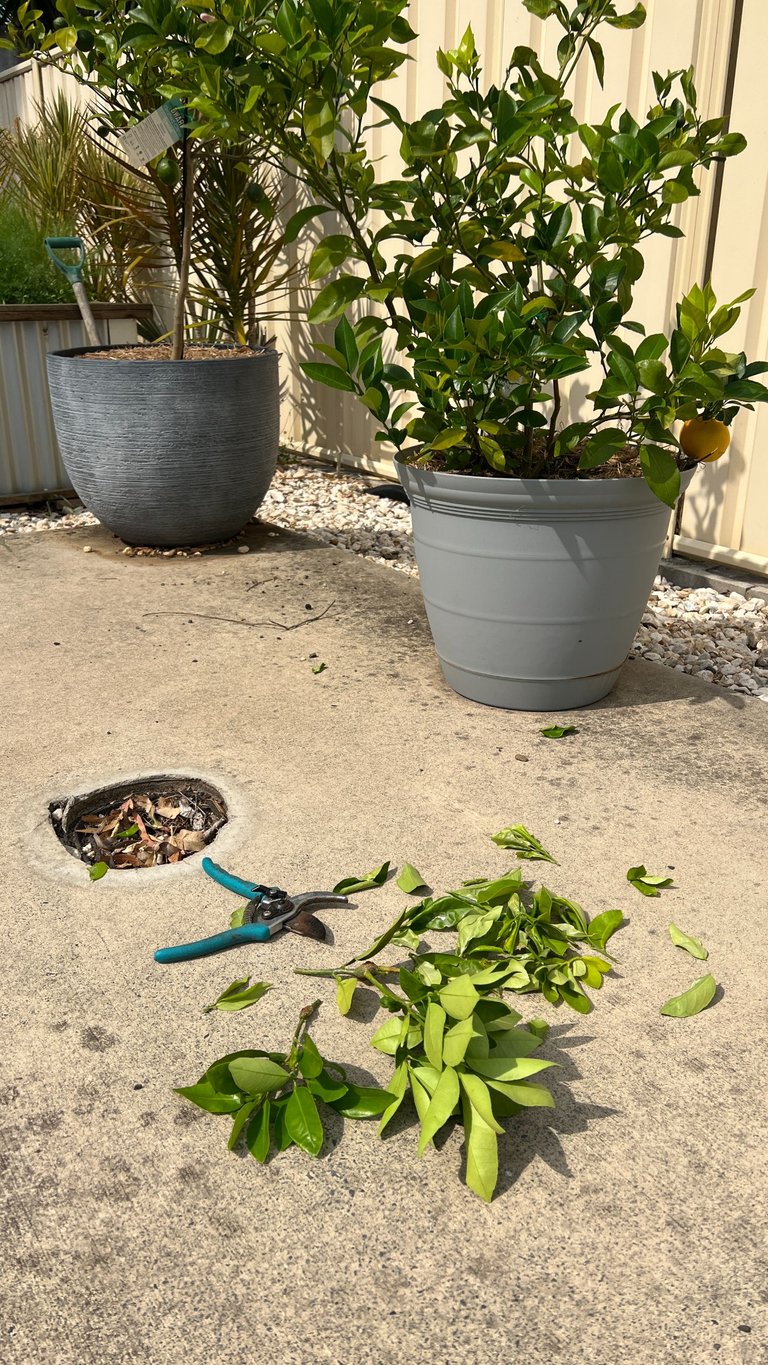


Fruit Fly (Bactrocera spp.):

l
look i'm not sure quite how much of this we have yet... no doubt it will come... but i added it in as im getting worried about it. Its SUCH a problem here in Queensland
Description: Small flies that lay their eggs in ripening fruit.
What they do: Larvae feed on the fruit, causing it to rot and drop prematurely.
Damage Level: Significant. Can cause complete loss of fruit in severe infestations.
Control Level Needed: High. For fruit intended for consumption, control is necessary.
Control Methods:
Hygiene: Regularly collect and dispose of fallen fruit. This reduces breeding sites.
Exclusion: Fruit fly nets or bags can physically prevent the fly from reaching the fruit. Apparently WHITE OBJECTS they hate reflected white light so making the bags around fruit to be a white net would be a good idea.
Traps: Protein-based traps can attract and kill the adult flies.
Chemical Control: Baits and sprays are available but use with caution and follow label instructions closely. ( not what i want to do)
basically so far i have been removing all fallen fruit or anything looking ikky. getting close to considering netting and i am still undecided about traps as it has to "lure" them to the trap first so i don't want to advertise the location of food too early if you know what i mean.
I'm not keen on spraying the whole plants so i will watch and wait. check fruit regular. apparently letting the chickens run under the fruit trees is excellent. however my chickens can't come in this area at all.
My next step is to get some traps. In addition to the above you need to control both male and female flies if you have them. the traps for male flies can tell you if there is a problem, but you apparently need to control both. see how we go here.


Stink Bugs (various species):

Ok these little turds have been challenging. Thank goodness they are on a tree that is waist high and not in the tree. but they are vicious little buggers and have been know to cause intense pain when they shoot chemicals into your eyes when you try and squash them.
Description: Shield-shaped bugs that can be green, brown, or other colours.
What they do: They pierce the fruit and leaves to feed, causing blemishes on the fruit and sometimes transmitting diseases.
Damage Level: Moderate. Aesthetic damage to fruit and potential disease transmission.
Control Level Needed: Moderate. While some damage is tolerable, controlling heavy infestations is necessary.
Control Methods:
Physical Removal: Hand-picking can be effective if numbers are low.
Natural Predators: Birds, spiders, and some predatory insects feed on stink bugs.
Chemical Control: Insecticidal soaps and pyrethrum-based sprays can be effective. However, always use insecticides judiciously.
Basically these needed to go. they were massively going to invade and kill the tree. there was almost more bugs on one branch than branch itself. So i knocked them off with the hose they sprayed them with phyrethrum spray. then got a couple left on the tree with the spray. (avoiding the beneficials as best i could).
the young ones are a pale green / yellow colour and difficult to see, so i needed to repeat this process every day for a week to get them. i'm still keeping an eye out. Or rather NOT keeping an eye out in case they sting me.
So far, its just ornamental damage i think. and the tree looks like it will recover.


Citrus Borer (Penicillaria jocosatrix):
Description: The Citrus Borer is a type of moth larva that targets citrus trees. The adults are nondescript brown moths, but the larvae are the real issue. They are creamy white caterpillars with dark head capsules, and they bore into the wood of citrus trees, leaving a trail of sawdust-like frass.
What They Do: Larvae tunnel into branches and trunks, disrupting the transport of nutrients and water within the tree. This can lead to branch dieback and, in severe cases, the death of young trees.
Damage Level: The damage can range from moderate to severe, depending on the level of infestation and the health and age of the tree.
Control Level Needed: Active management is recommended. While a mature, healthy tree can tolerate some borer activity, it's essential to manage infestations to maintain the tree's overall health and productivity.
Control Methods:
**
Physical Removal:** Check for the presence of frass and small entry holes. Prune out and destroy affected branches to remove larvae.
Preventive Care: Paint tree wounds with a suitable pruning paint to deter female moths from laying eggs.
Biological Control: Parasitic wasps and nematodes can target and reduce Citrus Borer populations.
Chemical Control: If the infestation is severe, insecticidal treatments can be applied. However, always use chemicals as a last resort and follow the label instructions carefully to minimize impact on beneficial insects and the environment.
Prompt action at the first signs of Citrus Borer activity can help prevent significant damage and preserve the vitality of your citrus trees.
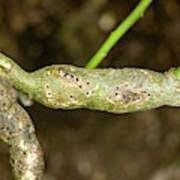

Basically that is it. We are investigating monitoring and controlling as necessary all these issues. as we have them all... lol lol lol
the joy of gardening and trying to garden with limited chemicals and trying to protect the good bugs too. Its been challenging
hopefully we are on track for getting these sorted. Fingers crossed that fruit fly does not decimate the crops.. cries...!!!!
anyway thanks for reading folks

Below is the garden when we moved in - green - but nothing to eat

CONCLUDING MESSAGES
Just another very busy week all in all. I will now sign off and start the next video.. lol... as its already late as well
talk later
happy gardening
Sarah
Anyway thanks so much for stopping along and reading my posts I am just loving my HIVE experience so far. Such a fun platform for sure.
For those that don't know my i'm currently focusing on Daily painting and somewhat amusing my self and my family with Acrylic pouring.. lol.. i wish i had a separate studio for that as it is so messy.
My other HIVE interests are:
- cooking
sunset photography (i take photos of the sky every night)
Art
Graphic Design
Gardening (just a smidgion)
Ballet
Here are a couple of snaps of some of the stuff i do outside what you see up in the posts above.


I feed our stink bugs to the chickens, but I don't think they're the same as yours. I'm pretty sure they don't spray and I've never seen them in the numbers you have there! The joys of a tropical climate, I guess.
My biggest pest on my orange tree is scale. I'm constantly scraping it off, thinking I've got it under control, then it's back the following year. Thankfully I've only had leaf miner once on it. I recall warnings from other gardeners a few years back to look out for gall wasp signs, when it somehow got brought in from Queensland. I've not heard anything since, though, so they mustn't thrive in our dry climate.
yeah leaf miner is just DREADFUL and gross. makes the whole plant look diseased. (which it is )
I didn't want to risk getting sprayed by anything (or the chickens) so i washed them to the concrete then sprayed them (to try not put chemicals on my tree.
Yep tropical queensland its joyful. Today it is 30 degrees in my bedroom and its 6pm. lol. its been warm.
Oh nice! I bet it's super humid too! I really struggle when we get humidity with the high temperatures, but thankfully it's rare here. We had a freak 40 degree day on Friday, but were back down in the mid 20s on Saturday, so it's nice at the moment.
yeah... i just bought dehumidifiers for the house as i feel that is a good thing... i got humidity monitors and 70% is just revolting... so now i can try bring it down to like 50% humiditiy... if possible
First thing first, your garden is big and beautiful. I was shocked when you said you missed only a day to garden and Pests got the chance. Well, Pests are always looking for an opportunity to come in but it is a good you noticed them on time. I love the details in this post.
yes you need to kill the new laavee every time they are laid on the leaf. BEFORE they hatch and burrow into to leaf. So missing a week let some bugs develop.
thank you for your comment. Have a nice day.
Congratulations @blingit! You have completed the following achievement on the Hive blockchain And have been rewarded with New badge(s)
Your next target is to reach 10000 upvotes.
You can view your badges on your board and compare yourself to others in the Ranking
If you no longer want to receive notifications, reply to this comment with the word
STOPTo support your work, I also upvoted your post!
Check out our last posts:
My goodness such a battle. When I have this much going on, I usually cave and just start spraying whatever nasty chemicals that are called for. Then I just don't eat the fruit for a year (yeah you still have to harvest it so you don't have rotting fruit around). I had some young cherry trees that were fighting multiple pests that I had to break out some chemicals on this year. Fortunately they aren't producing fruit yet anyway. I really try hard to limit chemical use but fruit trees are soooo hard. Seems easier to avoid chemicals in the rest of the garden.
Leaf miner is also one of my main problems in my Calamansi/Calamondin plants but I am glad there are no more damages that I have seen after I used anti-leafminer chemical.